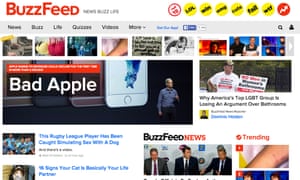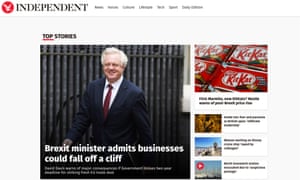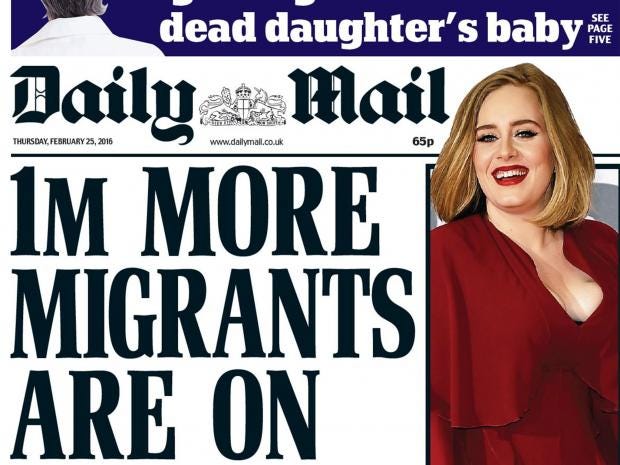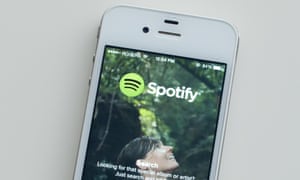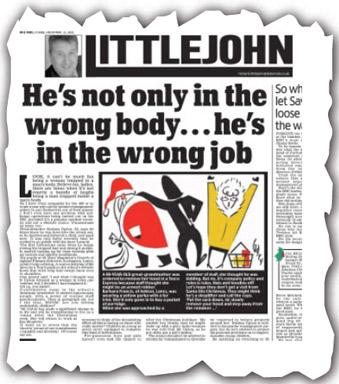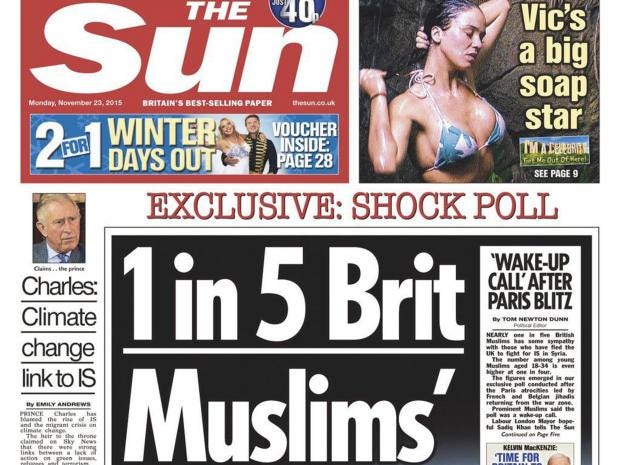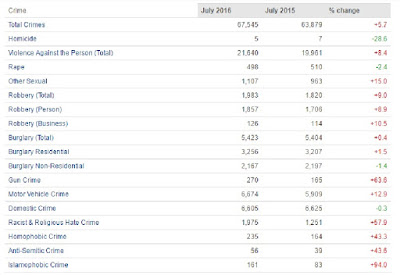1) Do you agree with James Murdoch that the BBC should not be allowed to provide free news online? Why?
2) Was Rupert Murdoch right to put his news content (The Times, The Sunday Times) behind a paywall?
3) Choose two comments from below the Times paywall article - one that argues in favour of the paywall and one that argues against. Copy a quote from each and explain which YOU agree with and why.
4) Read this article from the Media Briefing on the continuing decline of the newspaper industry.
5) Why do you think the Evening Standard has bucked the trend and increased circulation and profit in the last two years?
6) Is there any hope for the newspaper industry or will it eventually die out? Provide a detailed response to this question explaining and justifying your opinion.
1) Yes, because for many reasons namely the developments in NDM the quality of the news we are getting has gone downhill. News nowadays is not coming to us through major news conglomerates but instead through NDM sources such as social media primarily due to the rise of citizen journalism. However, we do pay the licensing fee which makes me question whether the statement of if the BBC should be allowed to provide free news online is something to agree with or not. This is because the news online that we are provided with is not technically free. I think that other news companies though should charge for news online to give readers something that has not been already heard somewhere else which we are more likely to pay for as it isn't copied news. However, with saying that it should be considered that The Sun did already attempt to charge people for online news and it failed so their paywall was removed.
2) To begin with, The Times paywall seemed to work as The Times and The Sunday Times had amassed a total of 140,000 paying digital subscribers. The Times titles added 13,000 new subscribers in the first half of 2013, implying a monthly acquisition rate of 2,100. However, it then comes to questioning whether or not The Times and The Sunday Times paywall works/worked, as we know already though it did not work and was therefore removed. As Mike Darcey CEO at News UK, says you only reach profit through subscriptions when you've deducted the cost of acquiring and retaining users. The Times Newspaper Ltd, lost £28.7 million for the year to July 1, on turnover of £361 million. Essentially, what I'm trying to say is The Times and The Sunday Times should not have put their content behind a paywall because the aim was to help them increase profits but instead they lost money. However, they gained more readership because they got more subscribers from the time that it was behind the paywall.
3)
I disagree with this comment about The Times and The Sunday Times not having a very big presence in the online world. This is because their presence may be minimal but with the heavy changes that the online world brings as long as The Times and The Sunday Times market themselves correctly then they can have a better online presence and therefore become a more digital based news conglomerate.
I agree with this comment because a newspapers success does depend on cost, differential quality and niche information not available anywhere else. If you offer something that is not able to be found anywhere else they people will be more willing to pay for reading their content. However, as the comment states The Times and The Sunday Times should improve the quality of the content and could potentially re try the option of a paywall as advertising revenues are in a slump and are not a sufficient source of revenue.
Media Briefing article
5) In my opinion, The Evening Standard has bucked the trend and increased circulation because the title has a free daily circulation of around 900,000. I think that the circulation figures are of such a high number because despite being free The Evening Standard is available in free newspaper bins in a wide selection of places. For example, The Evening Standard is distributed via retailers, supermarkets, corporate headquarters, hotels, mainline train stations and a team of over 300 branded merchandisers. Then, The Evening Standard has increased profits in my opinion as a result of advertising, with its increase in circulation from 700,000 to 900,000 more people are wanting to advertise in the paper as it has a wider and more recognized reach than most papers. The paper made a pre tax profit of just over £1m for the year to the end of September 2014.
6) I think that despite the way in which the newspaper industry is quickly dwindling through a downward spiral there is still hope for it but I do not think that the positive hope lies with the print side of the industry but instead with the broadcast and more predominately e- media platforms. As NDM develops we are able to access news that used to only be available in print forms over a selection of different devices. As a result, we are taking less and less interest in printed newspapers
and despite companies offering them to us free we as whole prefer to get the
news in the most convenient way possible. Convenient to us currently means
accessing the news through an electronic means which does not require us to
make any major changes to the way in which we go about our everyday business. As for the print industry that is slowly seizing to exist it will eventually die out completely due to the developments of NDM.
Website References
